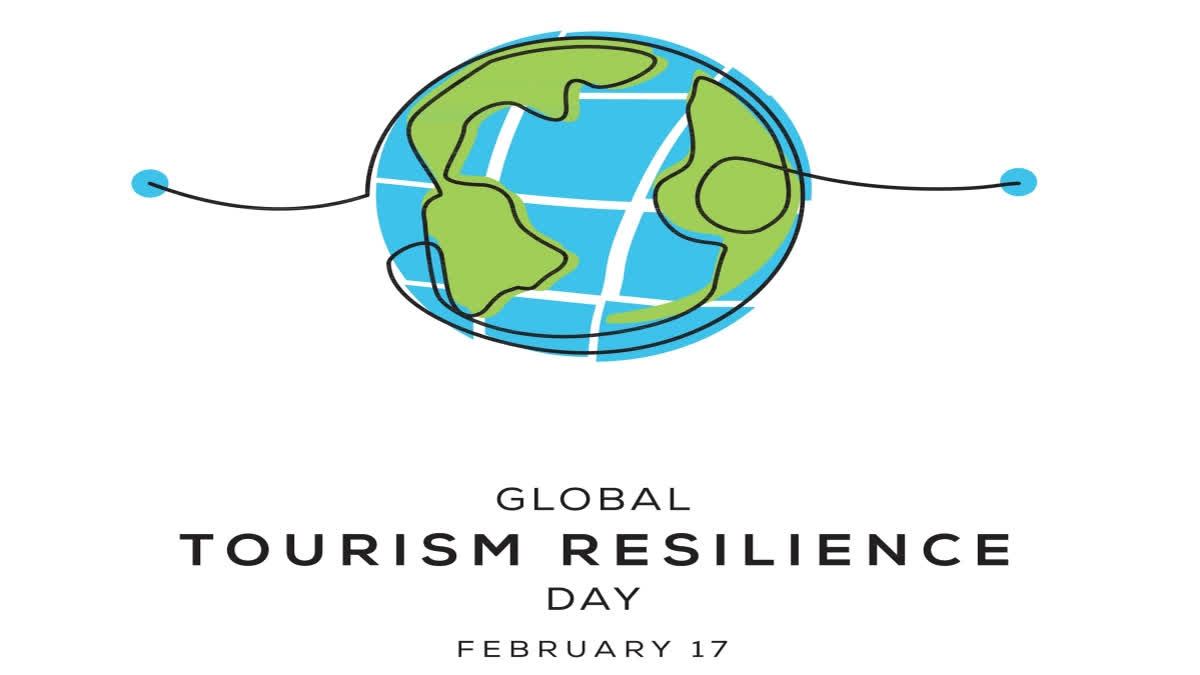Hyderabad: Global Tourism Resilience Day is an occasion to observe and reflect on the global tourism industry’s resilience. Over the years, the tourism industry has faced unprecedented challenges, from natural disasters to pandemics to political instability to economic downturns. Each year, GTRD is held on February 17.
What is tourism resilience? Tourism is a sector that is particularly vulnerable to climate change and other natural disasters. The term “tourism resilience” is used to describe a tourist destination’s capacity to withstand and recover from a crisis. There are many initiatives and programs that need to be put in place at the local, state, and global levels to help the tourism sector become more resilient.
Resilience in Indian Tourism- India is on the brink of a transformation, and the tourism and hospitality industries are at the forefront of this transformation. With a growing middle class and a changing economic landscape, tourism and hospitality in India have become a key driver for economic growth and employment creation.
The tourism sector has faced a lot of challenges and crises in recent years, including the pandemic, but tourism is one of the sectors that has shown remarkable resilience. Not only is the tourism sector growing, but it is also diversifying its offerings to offer new experiences and venues, which were unimaginable in India just a few years back. Some of these new experiences include timeshare, eco and wellness resorts, seaports and river cruises, which have found a huge audience among domestic and foreign tourists.
Consequently, tourism in India has become a prominent source of foreign exchange and investment inflow to India. In 2019-20, the sector attracted nearly US$ 3 billion and contributed to 6.8 percent of Indian GDP. India’s travel and tourism industry’s direct contribution to national GDP, at US$ 42.1 billion, is the eighth highest in the world, far surpassing the global average of US$ 7.4 billion. Favourable FDI regulations, spearheaded by the Government of Prime Minister Modi, have opened the sector to 100 percent investments through the automatic route, thereby supporting the emergence of new hotels, roads and other tourism-associated facilities.
Important Statistics on Indian Tourism-
- 6.43 Mn Foreign Tourist Arrivals (till September 23)
- 1.73 Bn Domestic Tourist Visits to all States/UTs (2022)
- 305.4% Annual Growth Rate of FTAs in India (2022)
- $16.92 Bn Foreign exchange earnings (FEE) from tourism (2022)
- 1.64% Share of India in International Tourism Receipts (ITRs) in World
Indian Tourism Industry Scenario-
The Indian Tourism sector ranks among the fastest-growing economic sectors in the country. The industry significantly impacts employment and drives regional development, while also creating a multiplier effect on the performance of related industries.
By 2028, India's tourism and hospitality industry is projected to generate revenue of over $59 Bn. Additionally, Foreign Tourist Arrivals (FTAs) are anticipated to reach 30.5 Mn by 2028.
Benefits of Tourism:
Social benefits: One of the major motivating factors for travel is to meet new people and learn about different cultures and tourism often leads to a greater understanding between people living in different societies.
Economic benefits: Tourism generates income for a variety of businesses and creates a wide range of employment opportunities. At the global scale, tourism is seen as one of the world’s largest and fastest growing industries. This trend has continued throughout the last 50 years.
Jobs benefits: In 2019, tourism employed 333 million people worldwide. That is about ten percent of the total employed people worldwide. Tourism is a major employer of women. It is a major generator of new jobs.
Environment benefits: It is generally the case that tourism has created more negative impacts on the environment than positive impacts. There are a number of ways in which tourism can have a positive impact on the environment of a destination and in some cases, can be a force for environmental change. In the United Kingdom, for example, a number of former industrial sites and areas of derelict land have been preserved and developed as tourist attractions and stretches of disused canals have been renovated so that they can be used for tourist purposes.
Cultural exchange benefits: In some cases, tourism may help to preserve traditional customs such as music, dance and theatre, as well as creating a demand for locally- produced foods and drinks.
One of the key pillars of global tourism resilience is sustainability. Sustainable tourism practices not only help minimise negative impacts on the environment and local cultures but also contribute to the long-term resilience of destinations.
By promoting responsible tourism, destinations can diversify their economies, preserve natural and cultural heritage, and enhance community well-being. Initiatives such as eco-tourism, community-based tourism, and sustainable hospitality practices play a crucial role in building resilience by fostering a more balanced and resilient tourism ecosystem.
Ultimately, Global Tourism Resilience Day serves as a reminder of the interconnectedness and interdependence of the global tourism industry. By working together and adopting a holistic approach to resilience, stakeholders can build a more sustainable, inclusive, and resilient tourism sector that can withstand the challenges of the 21st century. As we celebrate this day, let us reaffirm our commitment to building a brighter future for tourism—one that is resilient, responsible, and ready to thrive in the face of adversity.



